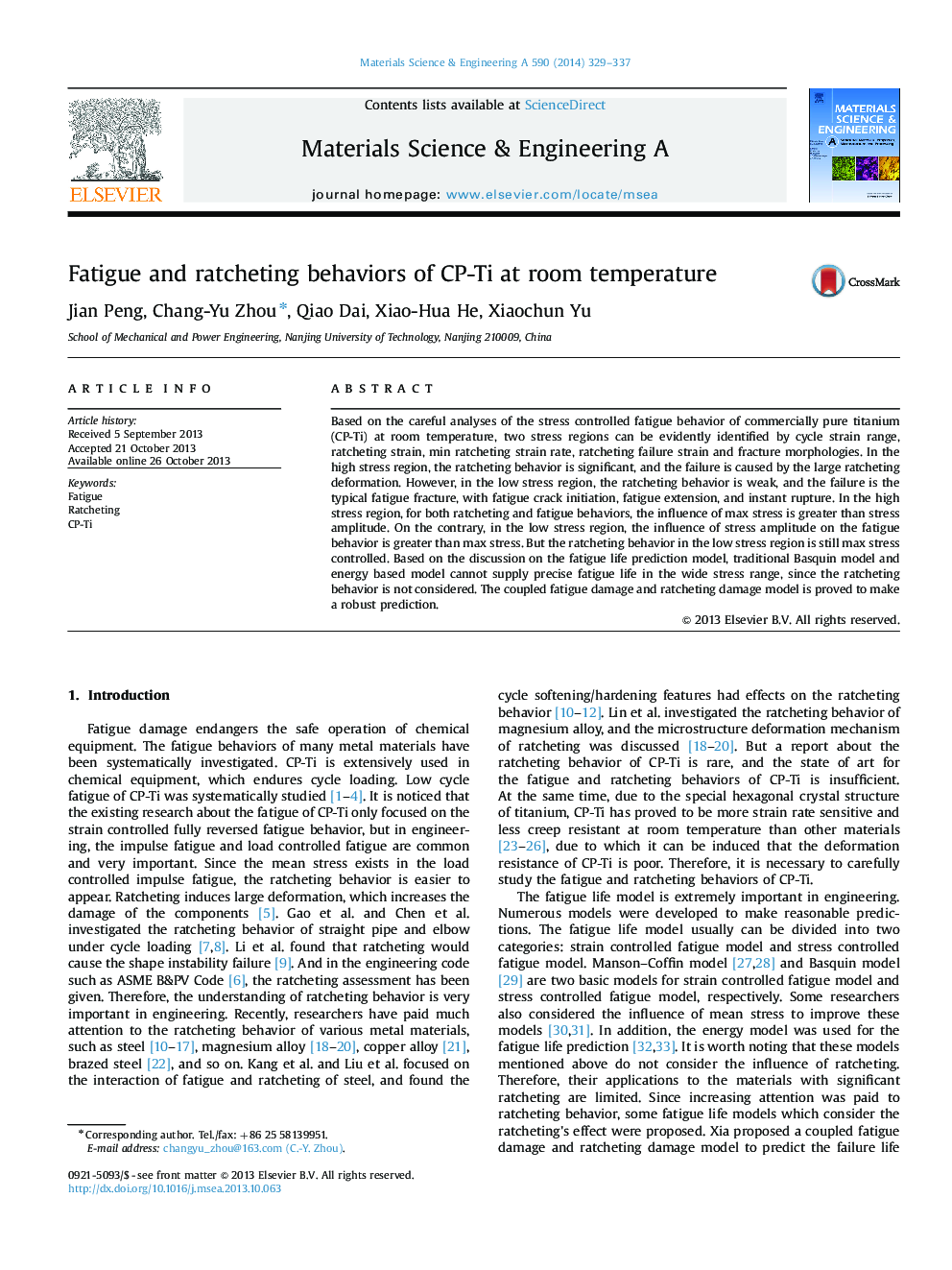| Article ID | Journal | Published Year | Pages | File Type |
|---|---|---|---|---|
| 7981943 | Materials Science and Engineering: A | 2014 | 9 Pages |
Abstract
Based on the careful analyses of the stress controlled fatigue behavior of commercially pure titanium (CP-Ti) at room temperature, two stress regions can be evidently identified by cycle strain range, ratcheting strain, min ratcheting strain rate, ratcheting failure strain and fracture morphologies. In the high stress region, the ratcheting behavior is significant, and the failure is caused by the large ratcheting deformation. However, in the low stress region, the ratcheting behavior is weak, and the failure is the typical fatigue fracture, with fatigue crack initiation, fatigue extension, and instant rupture. In the high stress region, for both ratcheting and fatigue behaviors, the influence of max stress is greater than stress amplitude. On the contrary, in the low stress region, the influence of stress amplitude on the fatigue behavior is greater than max stress. But the ratcheting behavior in the low stress region is still max stress controlled. Based on the discussion on the fatigue life prediction model, traditional Basquin model and energy based model cannot supply precise fatigue life in the wide stress range, since the ratcheting behavior is not considered. The coupled fatigue damage and ratcheting damage model is proved to make a robust prediction.
Keywords
Related Topics
Physical Sciences and Engineering
Materials Science
Materials Science (General)
Authors
Jian Peng, Chang-Yu Zhou, Qiao Dai, Xiao-Hua He, Xiaochun Yu,
